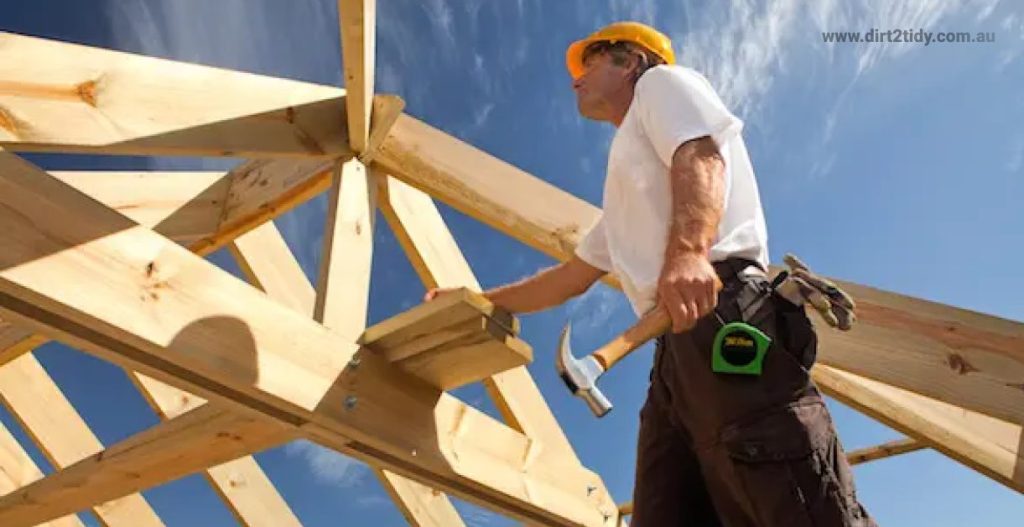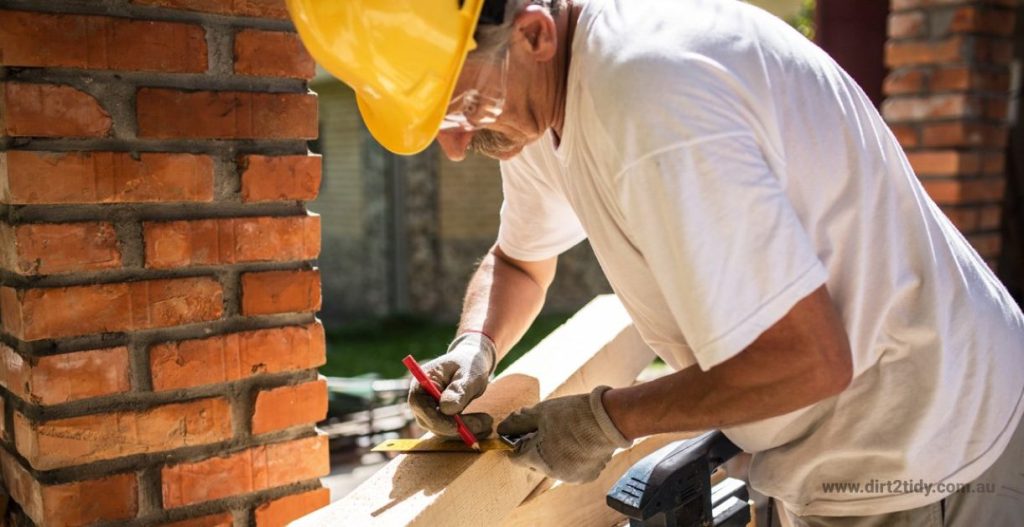Table of Contents
Construction is a huge business, from construction management to draftsperson. Being so huge, its jobs are diverse, and with that diversity comes a multitude of abilities in the numerous professions and specialisations.
A construction estimator and a construction manager have quite different talents. This article will discuss carpenters and builders, their jobs, and which one to pursue.
Exploring Career Pathways
Understanding these differences not only clarifies the roles and responsibilities within the construction process but also highlights the potential career pathways for those interested in entering the field. Whether one starts as a chippie with a passion for woodwork or aspires to manage entire construction projects as a builder, the construction industry offers diverse opportunities for skilled professionals to build their careers.
Key Roles to Consider
- Carpenters (Chippies): Ideal for those who love working with wood and crafting intricate structures.
- Builders: Perfect for individuals aiming to oversee and coordinate complete projects.
These roles illustrate the varied paths one can take, from hands-on craftsmanship to project management, reflecting the industry’s broad scope for career growth. Whether honing specific skills or aiming for management, the construction field accommodates a wide range of aspirations.
A carpenter and a builder
Carpenters develop and maintain infrastructure using their carpentry skills. It entails preparing and installing project supplies. They form and install construction, ship, bridge, and roadway materials. They operate indoors and outdoors and aren’t restricted to large-scale projects; they can also build kitchen cabinets and window doors.
Carpenters have numerous titles, specialisations, and talents. As their passion in retail work grows, carpenters often start out as builders.
However, most carpenters deal with wood. They cut and shape lumber to place on flooring, walls, and framed buildings. They also use wood to build doors and other housing constructions. It includes staircases, window frames, etc.
Carpentry might comprise rough carpentry, joister, finish carpentry, and formwork carpentry. We’ll briefly discuss these.
Is a Carpenter Considered a Builder in Australia?
In Australia, identifying whether a carpenter is considered a builder can be a bit complex. While many builders start their careers in carpentry, having expertise in this field doesn’t automatically qualify one as a builder.
Diverse Career Paths
To become a builder, professionals must navigate a pathway open to various trades. This could mean that a builder started as a carpenter, but they might also have begun as a bricklayer, plumber, or electrician. Each of these trades offers distinct skills that are invaluable when transitioning to building.
Beyond Carpentry
The shift from carpenter to builder involves expanding one’s skill set to include project management, understanding building regulations, and coordinating multiple trades on a job site. Builders need to have a comprehensive grasp of the entire construction process – far beyond the expertise required for carpentry alone.
Common Progression
It’s common for individuals in the industry to progress from carpentry to building. The extensive knowledge of construction materials and design structures gained during carpentry is a natural stepping stone towards becoming a builder. However, not all carpenters take this path, and additional qualifications and experience are needed to officially become a builder.
While many builders indeed start as carpenters, it’s important to note that being a carpenter doesn’t automatically make someone a builder in Australia. The building profession requires a more extensive and varied skill set.
Carpentry roughness
In construction, buildings need wood and metal framings to support the walls, floors, and roofs, much like a skeleton. Rough carpenters did it.
Rough carpenters might specialise in rough framing. Most rough carpentry uses ordinary wooden framing, but other forms of frame require additional specialisation to maintain construction requirements.
Rough carpenters ensure structures are up to code by inspecting equipment to identify any possible faults. Apprenticeships and classes teach crude carpentry.
Joister
Joisters build floor joists. A joist bears a weight, is horizontal, goes across a building, and is supported by beams. Both are equally significant in a construction.
Joisters, like rough carpentry, favour durability above intricate work, but when it comes to wooden flooring finishing, joiners do more thorough work for a superior gloss. Framers/rough carpenters put floor joists alongside joistering. This enables a floor. Joists support floors horizontally.
Floor fixers build floor joists. This type of carpentry involves less intricacy in favour of structural stability and durability. Joister carpenters utilise more precise procedures to polish timber flooring finishes.

Carpentering forms
Formwork involves gathering metal, wood, and plastic that have been manufactured, spraying them with oil to ensure concrete doesn’t stick, and inserting steel reinforcements to provide concrete strength. After cleaning and stripping the concrete forms, they may be reused in other projects.
Formwork carpenters build gap-fillers. In high-rise buildings, they slip-form fresh forms on top of poured concrete.
Carpentry
Final carpentry. After all other forms of carpentry are done, another type comes in. Sheathing, wiring, framing, plumbing, and functionality are complete. Finish carpenters may design and install windows, interior doors, cabinets, and more before homeowners move in. This can be done even after the homeowners move in.
Craftsmen
Master carpenters oversee major jobs and have multiple carpenters working for them. A master carpenter may opt to guide other carpenters to finish the work.

Builder
Builders have fewer duties than carpenters. Builders oversee residential and commercial construction, remodelling, and maintenance. Many builders are certified tradespeople, but this is not a must because their main goal is to assemble the correct number and spread of tradesmen to do the work on site.
While carpentry is a crucial component of the building and construction industry, it is not synonymous with it. Building and construction encompass a wide range of activities required to plan, design, and construct buildings and infrastructure. This field includes various specialties and trades, such as electrical work, plumbing, masonry, and, of course, carpentry. Each trade focuses on a specific aspect of the construction process, with carpentry primarily concerned with the woodwork elements of a project.
Builders play a pivotal role in coordinating these diverse trades, ensuring all elements come together seamlessly. Their oversight ensures that the project progresses smoothly and meets all necessary standards. By managing the integration of different specializations, builders are essential in transforming blueprints into reality.
A builder has broad building expertise. This includes everything from analysing a site, procuring permits, and creating cost estimates to reading and interpreting drawings, scheduling meetings, and supervising the building process.
Many builders don’t consider themselves experts in every aspect of construction due to their extensive expertise. Most builders specialise in one sort of project, such as housing projects, public roads and railroads, custom buildings, etc.
Private and governmental projects are available. Builders must ensure that construction is done according to local, state, and national requirements and maintain a safe jobsite.
Transitioning from Carpenter to Builder in Australia : A Comprehensive Guide
Transitioning from a carpenter to a builder in Australia requires expanding your skill set beyond carpentry. Here’s how you can make the leap:
- Expand Your Skill Set: Moving into a builder’s role means gaining expertise in project management and regulatory compliance. You’ll need to master the art of coordinating various trades, from electricians to plumbers, ensuring every piece fits seamlessly into the project puzzle.
- Understanding Regulations: Familiarize yourself with local building codes and safety regulations. Builders are responsible for ensuring compliance with these standards, which vary across states and regions in Australia.
- Gain Qualifications and Certifications: Consider enrolling in relevant courses or workshops that provide foundational and advanced knowledge in building practices. Certifications such as a Diploma of Building and Construction can be immensely beneficial.
- Networking and Experience: Build relationships within the industry. Engage with other professionals across different trades and attend industry events. This can open doors to mentorships and collaborations, providing valuable on-the-job experience.
- Diversify Your Experience: Although many builders start as carpenters, it’s crucial to gather experience in various construction areas. This diversification will provide a well-rounded understanding of building processes and requirements.
By broadening your expertise and gaining the necessary qualifications, you can successfully transition from a skilled carpenter to a proficient builder in the vibrant Australian construction industry.
Unique Contributions of Builders and Carpenters
The construction industry relies on the unique skills and expertise of both builders and carpenters, along with other tradespeople, to bring buildings and structures to fruition. While builders oversee and manage construction projects as a whole, carpenters specialise in woodworking and the structural aspects of building.
In Australia, the transition from carpenter to builder is common, but it requires additional qualifications and licensing, underscoring the distinct roles these professions play in the industry. Such requirements highlight the intricate craftsmanship and managerial skills that define the unique contributions of each profession to construction projects.
By understanding these roles, you can better appreciate how each contributes to the completion of a robust and well-constructed building.




